There are the first three quarters and then there is Q4.
Every year the fourth quarter brings with it added pressure for all retail businesses. It’s the last chance to get sales and hit revenue goals for the year. Tie that together with the madhouse that is Black Friday and the increased focus from the world on holiday shopping, and it’s no wonder that a lot of companies create a separate budget for Q4 and treat it almost like an entirely separate thing from the rest of the year.
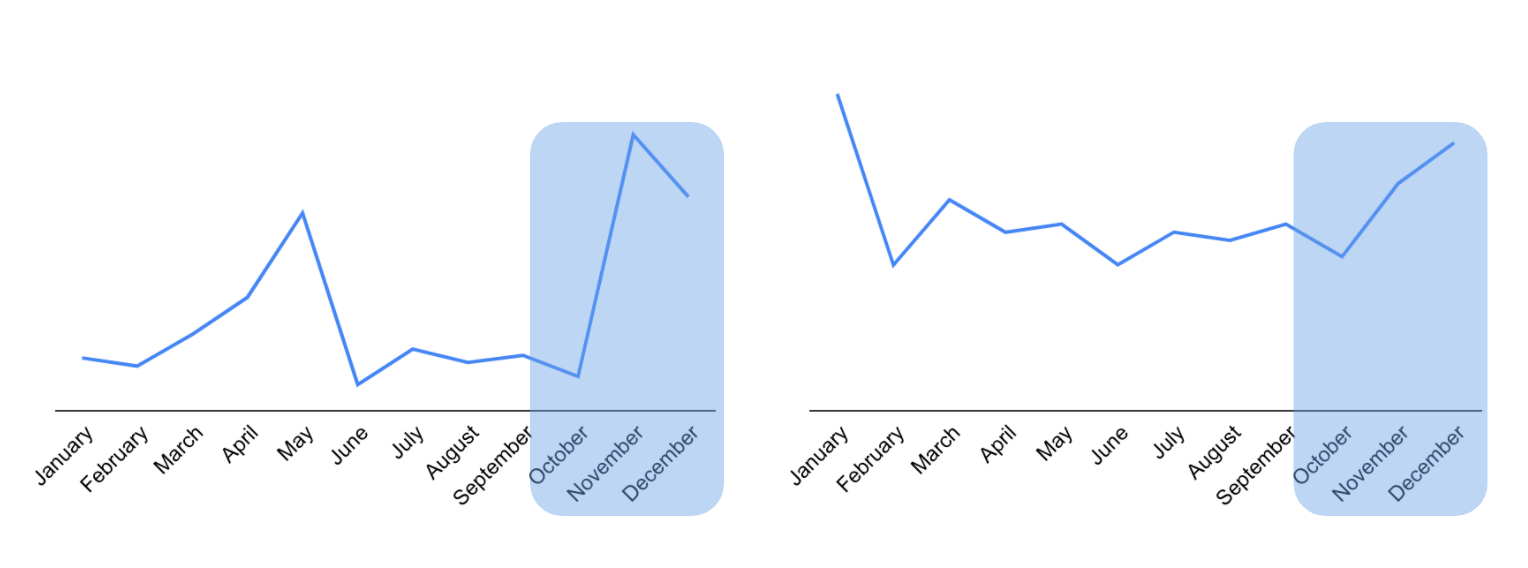
It is a huge quarter for sales, particularly in ecommerce. How big? Here’s what we’ve seen the last few years:
- 2% to 4% increase in sales in Q4 compared to Q3
- 10% to 12% increase in sales in Q4 compared to Q1
- 11% to 16% increase in sales in Q4 year over year
This year, possibly more than ever, the pressure is on. There is a huge question mark around brick and mortar retail sales…will stores be open? Will people be willing to go in store to shop? Will holiday shopping be allowed in the same mob-like, mass-hysteria fashion of the days of yore?
But there are also questions about how people will behave in general this year at the holidays. Will people travel to see family as much? Will they have the disposable income to shop? Will they buy more or fewer gifts?
Experts are projecting a larger-than-usual increase in fourth quarter ecommerce sales (18% year over year).
More pressure. More unknowns. But also, more competition this year.
Not only will you have the normal massive jump in competition that comes with Q4, you’ll be competing against all the new businesses that have shifted online, AND against politicians across the country as they advertise for the November 2020 election.
So this year, you need to be more strategic than ever to absolutely nail your holiday campaigns and emerge from Q4 victorious.
We’re here to help.
In this guide, we’re going to walk through how to crush Q4 and the holidays. We’ll cover:
- Planning
- Nailing your offer
- Messaging for holiday ads
- Modeling out a budget
- Preparation
- Why you need to start early
- How to use user behavior to create segments
- How to crush it with your creative
- Execution
- The key components
- The four phases
Planning
“If you fail to prepare you are preparing to fail” – Rev. H.K. Williams
“Give me six hours to chop down a tree and I will spend the first four sharpening my axe.” – often misattributed to Abraham Lincoln, actual source unknown.
You can choose your motivational motto, but either way, if you enter the fourth quarter and holiday season without a plan you will not have the same level of success as if you had done proper planning and preparation up front.
Preparing for the holiday season comes down to knowing what promotions you’ll offer your customers, what messaging you’ll use to reach your audience and persuade them to buy, and how much spend you’ll put behind your holiday campaign.
Nailing your offer
Your offer should reflect your ultimate goals. Is revenue the name of the game? Is it transactions? Profit? Pushing particular products and moving inventory?
Here are some promotions you can run based on what your goals are:
- Revenue → if its cash flow you want, increase AOV with bundling discounts.
- Transactions → if the goal is sheer volume, price is the lever.
- Profit → you’re looking to protect margin, so add in free gifts with purchase to move inventory that you’ve already paid for and get a sample in people’s hand while protecting your margin.
- Pushing a particular product → discount it as an upsell or feature it as a hero product like never before.
Brands are often quick to knock off a massive percentage from the price tag.
It is the most straightforward approach.
“If I make my prices lower, more people will buy from me.” That’s the thinking, right?
While that may be true, the cost of the sale may be more than we’re giving it credit for.
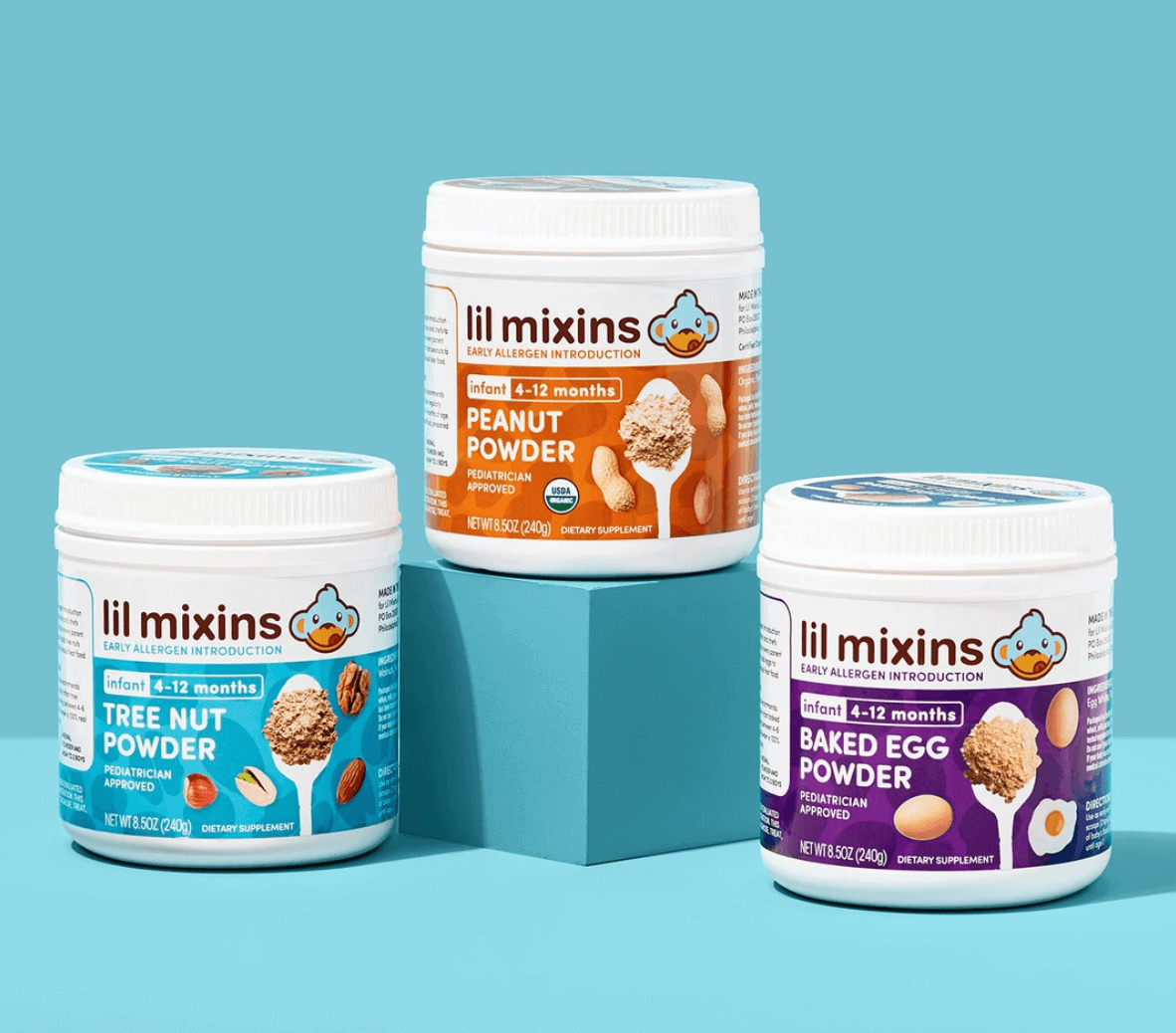
First of all, you need to account for the loss of margin. McKinsey research shows that a mere 5% price reduction actually takes an 18.7% increase in sales volume to make up for the discount, and that is just the economic side, not the psychological aspect.
Discounting your products has negative psychological effects on shoppers, and conditions them to expect discounts and that they should only shop when things are on sale, in general.
But more specifically to your brand, they now have a comparison and memory of a time they were able to buy from you for less, so your price seems more fluid, more flexible, and may only be (on a subconscious level) worth the sales price.
But if everyone else is doing a discount, can you get away with not?
Unequivocally yes.
You just need to get creative.
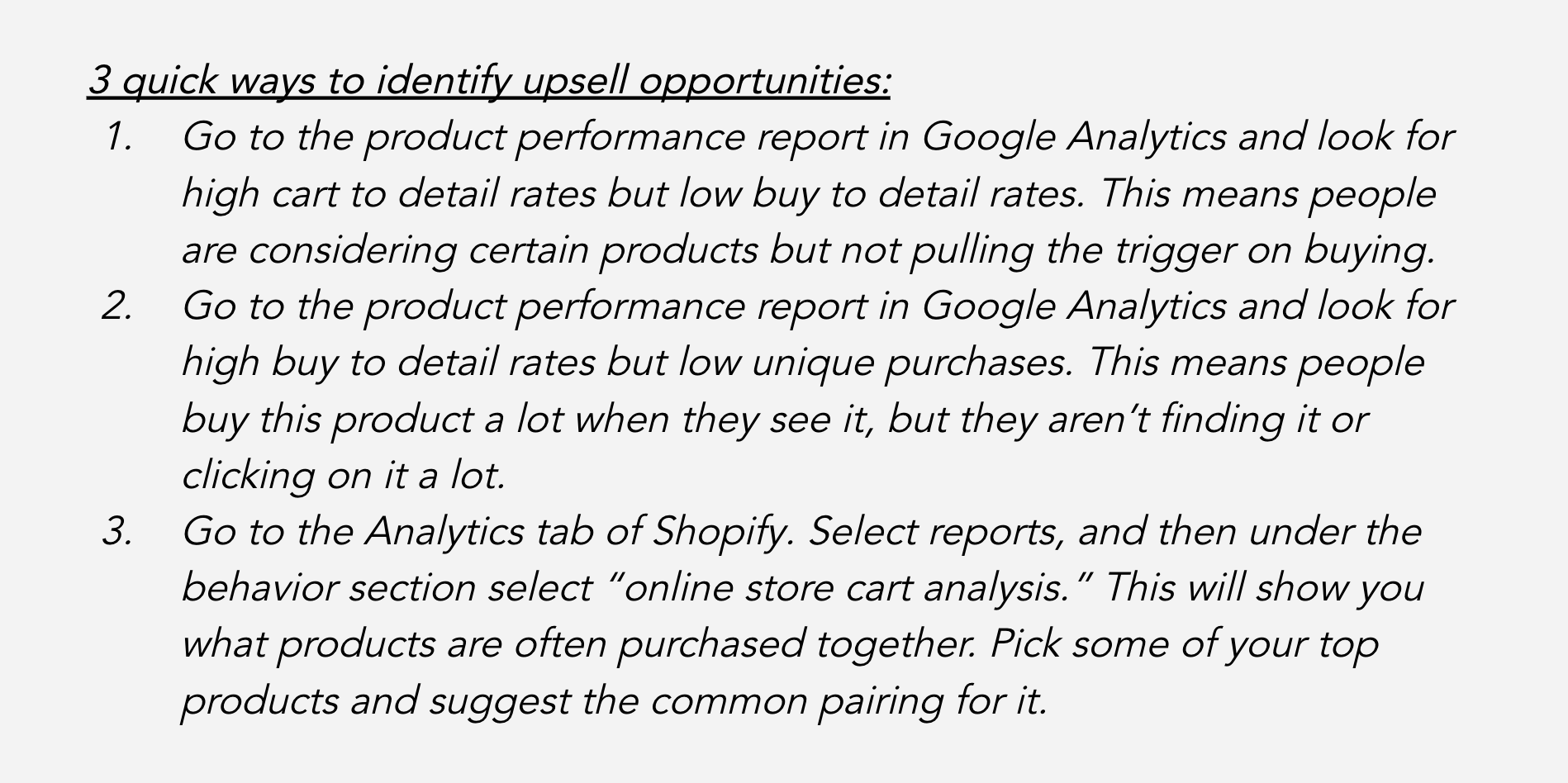
Instead of giving 30% off anything in the store, incentivize bundles.
Give free shipping across the board, or a free gift with purchase. This makes your customers think they’re gaming the system and getting more for less, without causing your shoppers to devalue your brand or products.
Think outside the box. What do your buyers really want? Then think of a fun, unique, and compelling way to give them that before you slash prices. Keep your product margin, keep your value, and let the profit cut be from the free gift or incentive.
Messaging for holiday ads
Nothing is won with nuance.
Remember, the holiday time is always competitive, not just for you but for your users, too. Everyone is trying to get their attention, their time, and their money. Don’t make them work to understand what’s in it for them.
Simplicity is safety.
You’ve figured out your offer, now think about who it’s right for and why. Tell them what they are going to get. Make it straightforward.
Look back at what’s worked well for you and iterate off that.
And please don’t build it in a vacuum.
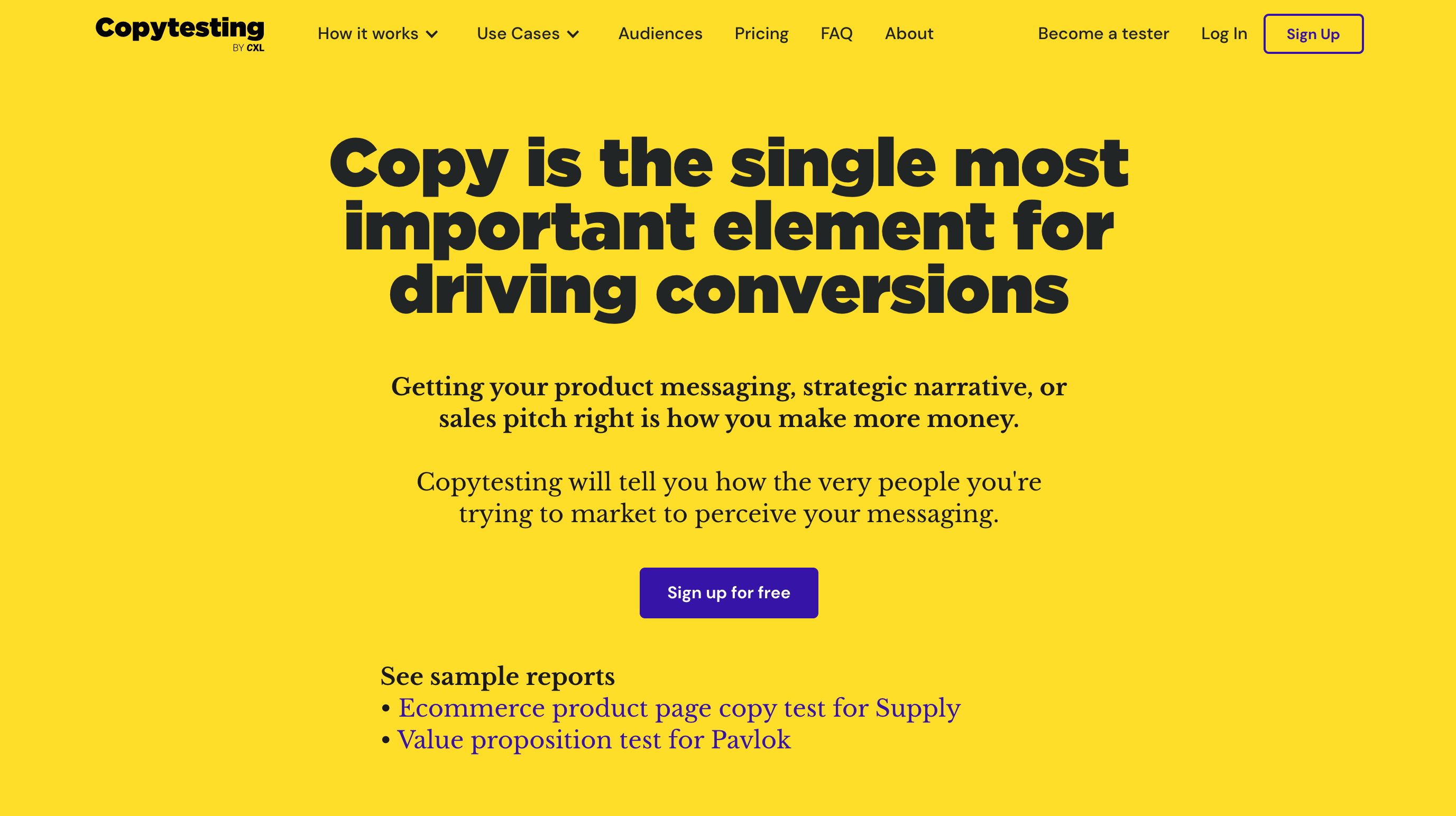
Testing these days is easier than ever. Our favorite testing tools are Helio and this brand new tool from Peep Laja and the CXL team called Copytesting.
Start testing and get real feedback to build messaging that will work.
Modeling out a budget
A forecasting model will never be perfect, but it should give you the tools to fight for the budget you need and to assess your performance in real time. What you want to do, at a high level, is show how much it costs to get traffic and conversions. If your business has a specific goal for Q4 and the holidays then this model will show roughly what it will take to reach that goal. If you don’t already have a target on the wall, then this model can get that conversation started, allowing you to see what is possible.
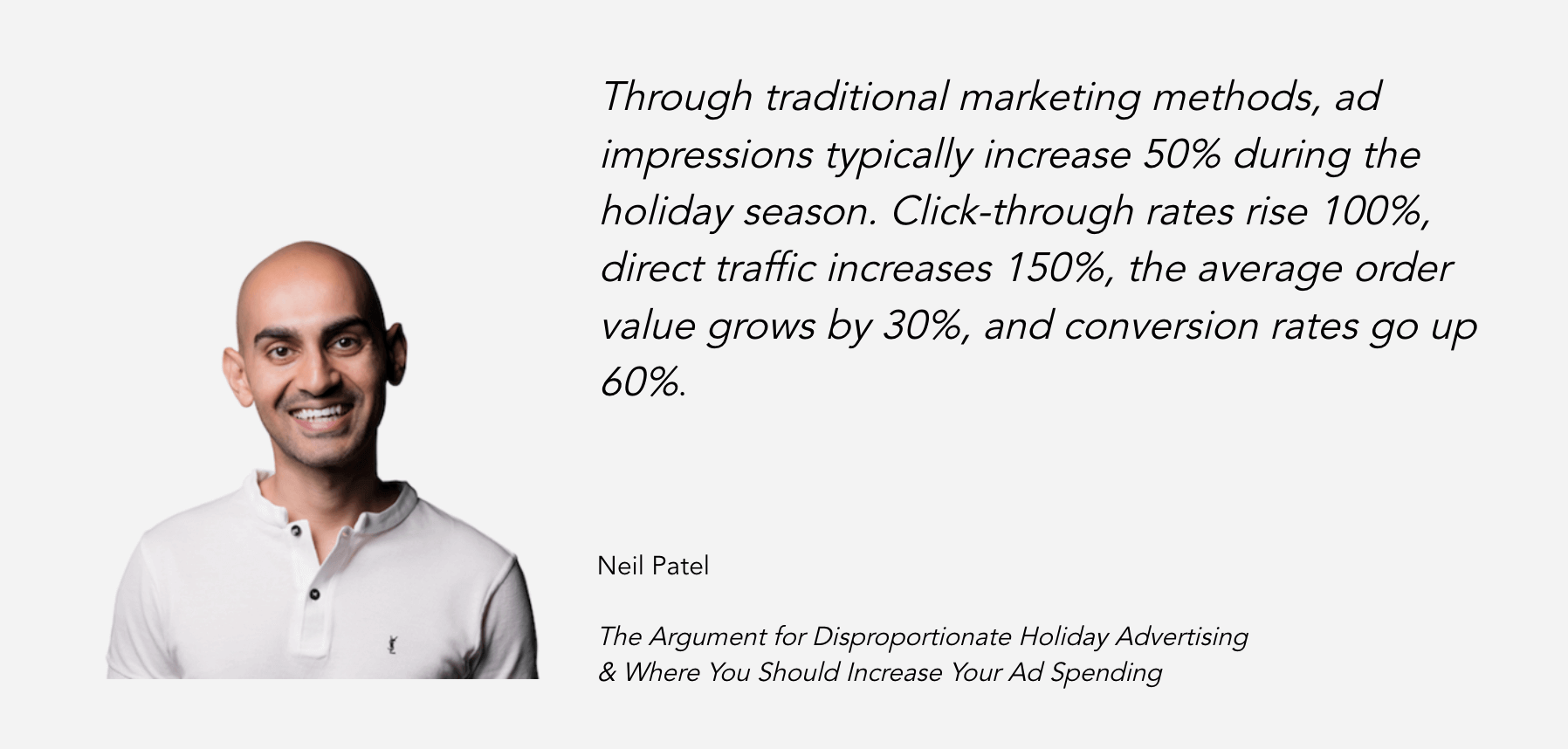
The first thing you’ll do is look at last year’s numbers. Look at the first three quarters of 2019 as a whole, and then compare the Q4 advertising numbers to the rest of the year. How much did your CPCs, CPMs, CTRs and conversion rates change? We call this the Q4 Jump Method. It looks at how much costs jumped in Q4 compared to the rest of the year.
Then you want to look at how much things changed in the first three quarters of this year compared to the same time period last year. How are your ads trending in terms of cost, engagement and conversions? We call this the Annual Change Method. Instead of looking at the jump of a quarter within the year, we’re looking at year over year change.
You can take these two different methods of assessing cost and performance change to extrapolate two different projections of what it will take to hit your goals in Q4 of 2020. The closer those two numbers are the better.
The third thing we do is add in some buffer…this is just a mechanism to paint a more dreary picture so you can be prepared with budget if things start going poorly. Hopefully you do great and now you just have extra budget that you forecast and can drive even more sales, allowing you to blow past your projections and targets. But if not, you’re prepared.
Now that you have these four numbers (Q4 Jump Method results, Annual Change method results & your poor-performance buffer for each) you can select which of them you want to select as your guiding light.
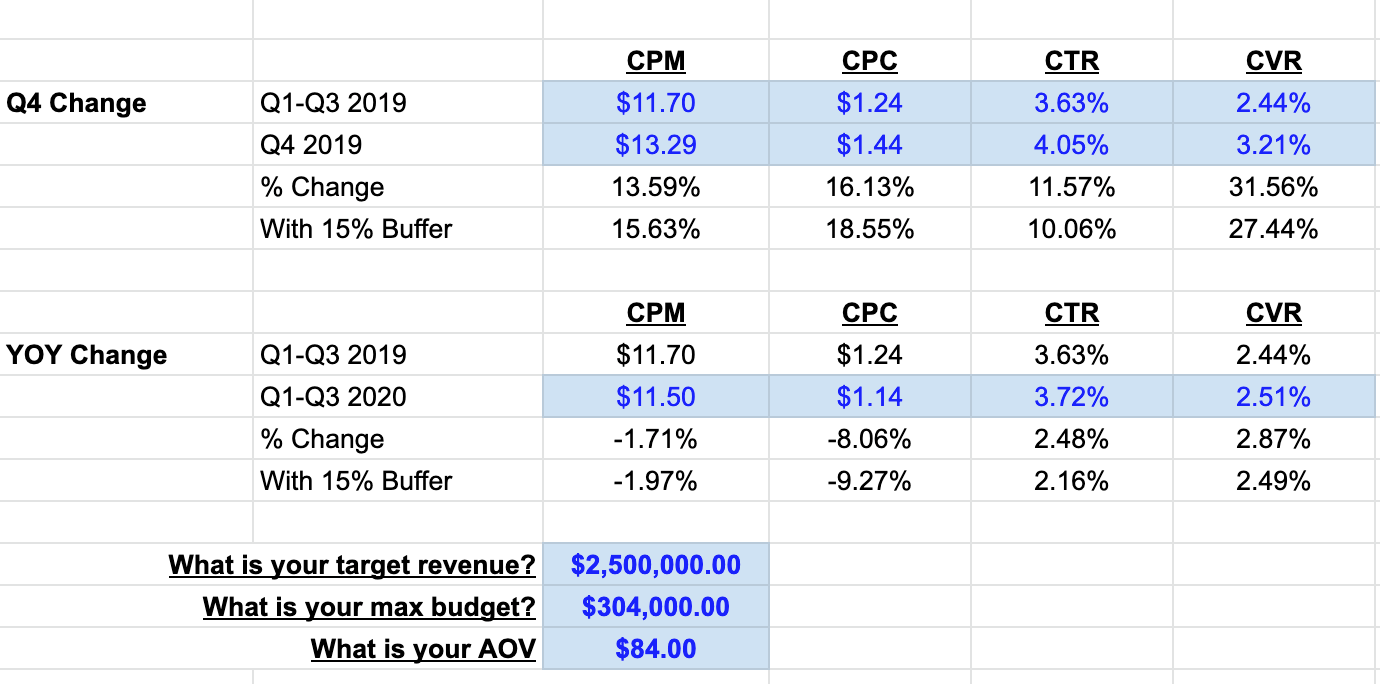
To make it easy on you, we’ve built out a simple modeling tool you can download and use for yourself. Pull the numbers from Facebook Ads Manager and your website, plug in your top number (whether that’s a goal or a budget cap) and this spreadsheet will give you the four scenarios outlined above.
Preparation
Once you’ve done the analysis and the planning, it’s time for the fun stuff. Now you get to start building your retargeting audience, trying to understand each user group and start working on creative assets.
Get ahead of the curve
The key to having a successful November and December is starting in September and October.
Every year brands start advertising earlier because this is just a plain fact, and everyone wants to get a head start. As annoying as that may be, that is why we plan and why you start early.
Here are the key reasons that it pays to start early:
- It’s cheaper to advertise in September and October than in November and December.
- It’s cheaper to advertise to people that have visited your site before.
- It’s more effective to advertise in September and October.
Let’s break each of those down.
It’s cheaper to advertise in off-peak season
Competition is lower for ads during September and October, so CPM is lower in these non-peak buying months.
While more and more brands are starting to advertise early, and generally speaking advertising costs are going up, September is not considered to be a high-sales volume month (why buy in September when you can wait a couple months and get insane deals?).
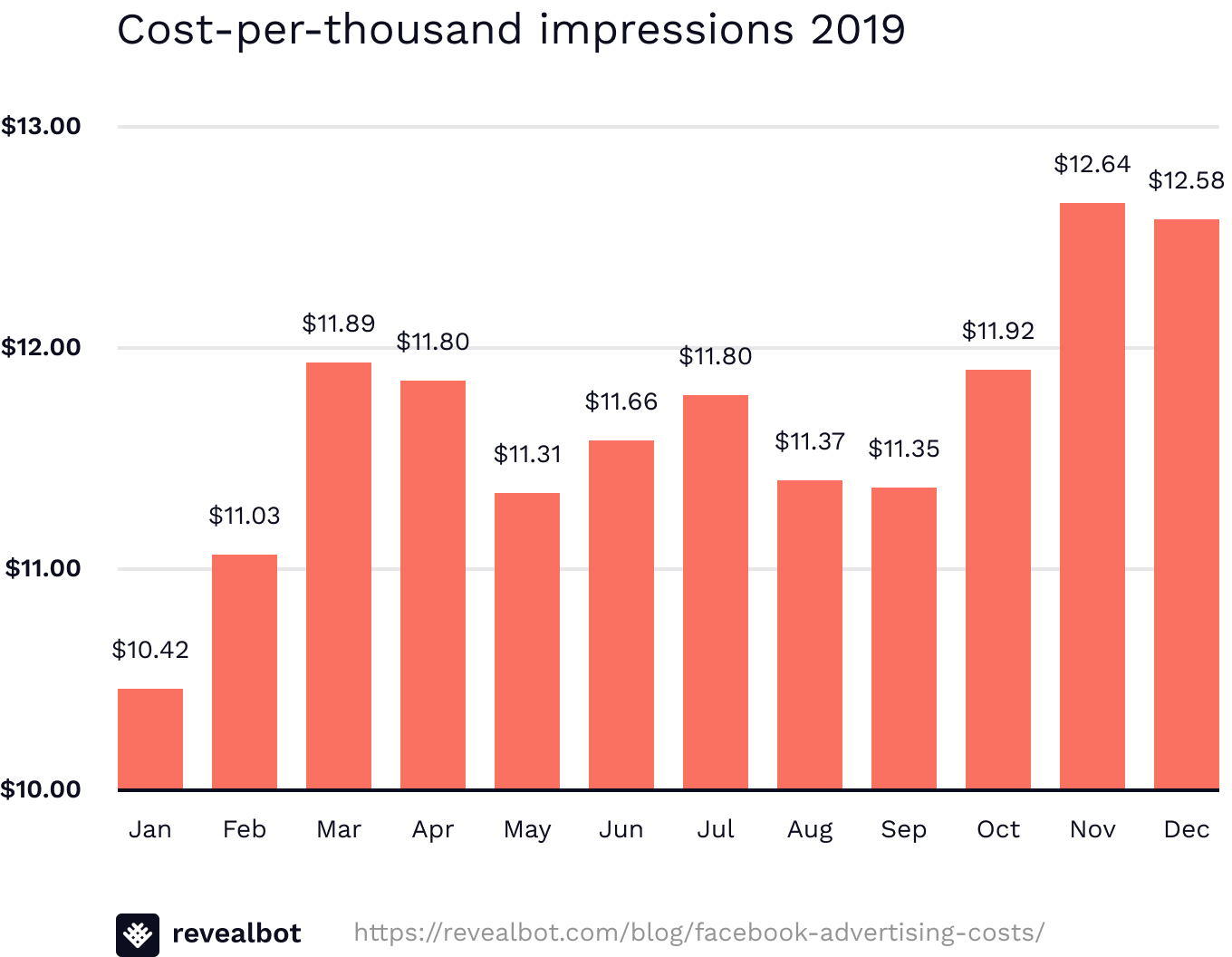
Why don’t more people advertise here then? Because they didn’t do the planning and preparation that you are going to do. They weren’t ready, so they were caught behind the 8-ball and had no choice but to pay a premium to simultaneously prospect (reach new people) and retarget with their ads during the holiday rush.
Not you. You’re going to run your prospecting ads early so you can build a good retargeting audience for the real holiday season.
It’s cheaper to retarget people than to find new ones
This might catch you off guard because it doesn’t look like it in your Facebook Ads manager, but retargeting is cheaper than prospecting.
CPM is higher on retargeting and so is CPC, so how can it be cheaper?
First of all, look at frequency. While you may see a higher CPM, you’re getting in front of the same people more often. Common sense would tell you that showing ads to people multiple times is a bad thing, but the data shows that it’s actually better.
People need to see things multiple times. Maybe their mood is different and now they are ready to shop. Maybe they meant to shop the first time and forgot. Repetition builds familiarity and familiarity builds trust. The familiarity heuristic is a cognitive bias…it says that we place more importance on things that are familiar to us.
The other thing that makes retargeting cheaper is the cost per conversion. Not per impression. Not per click. But per sale. You will see a lower cost per conversion and a higher return on ad spend (ROAS) with your retargeting ads. And that is what it is all about.
It’s more effective to advertise early
How can it be more effective to advertise early if people aren’t going to be ready to buy until the onslaught of sales in November?
Because you’ve prospected them early, piqued their interest, and got them to sign up for your email list earlier (September and October).
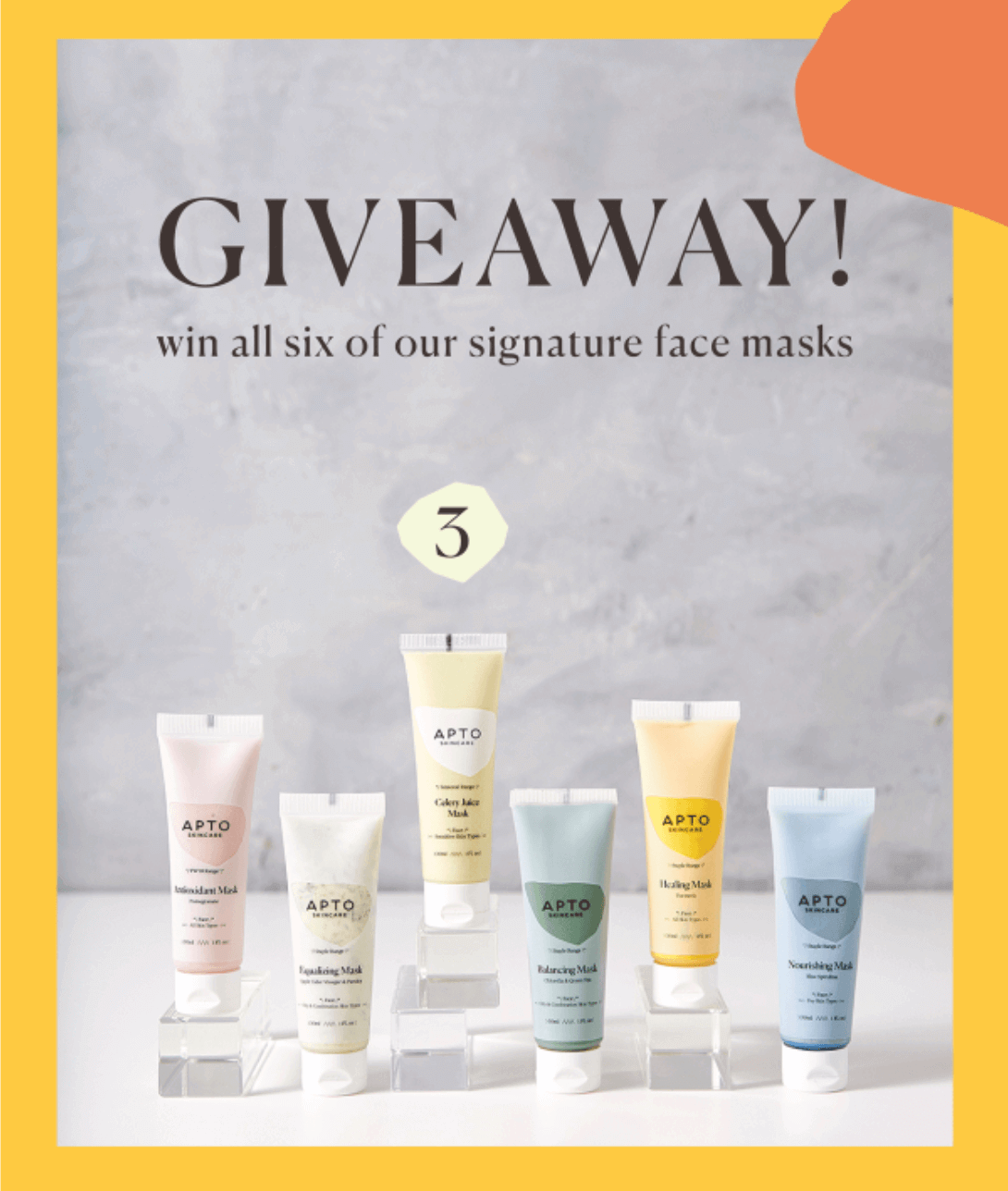
By getting potential new customers to sign up before the holiday season, you’re able to send them your welcome flow (brand onboarding). You’ve communicated your value to them. They’ve had the chance to shop and browse.
Through your effective email marketing you have been able to confront and eliminate their buying concerns (FUDs – Fears, Uncertainties and Doubts). You’ve effectively established that you are a brand that aligns with them, their values, their problems, their dreams and who they want to be.
If you wait to reach people until they are looking to buy, they haven’t gotten this familiarization. They are still evaluating you as a brand. They’re deciding whether or not they should buy.
We want to shift that mental discussion from “should I buy?” to “what should I buy?”
And that’s where getting them to browse early allows you to better communicate this to them.
Actions speak louder than words
Matching messaging and offer to the right user is the most effective way to market and sell. This part is pure logic. If you show people things they’re interested in, they are more likely to shop than if you show them things they are not interested in.
How do you figure out what it is people are interested in? How do you uncover their interests and motivations?
You listen.
We’re huge proponents for getting direct feedback by doing user research. Surveys, tests and interviews are incredible tools to learn a lot about the people you’re trying to sell to and serve.
But that’s not what we’re talking about here.
We’ve all heard the adage “actions speak louder than words.” So “listen” to their actions.
Let people’s behavior guide you.
We call this behavioral segmentation.
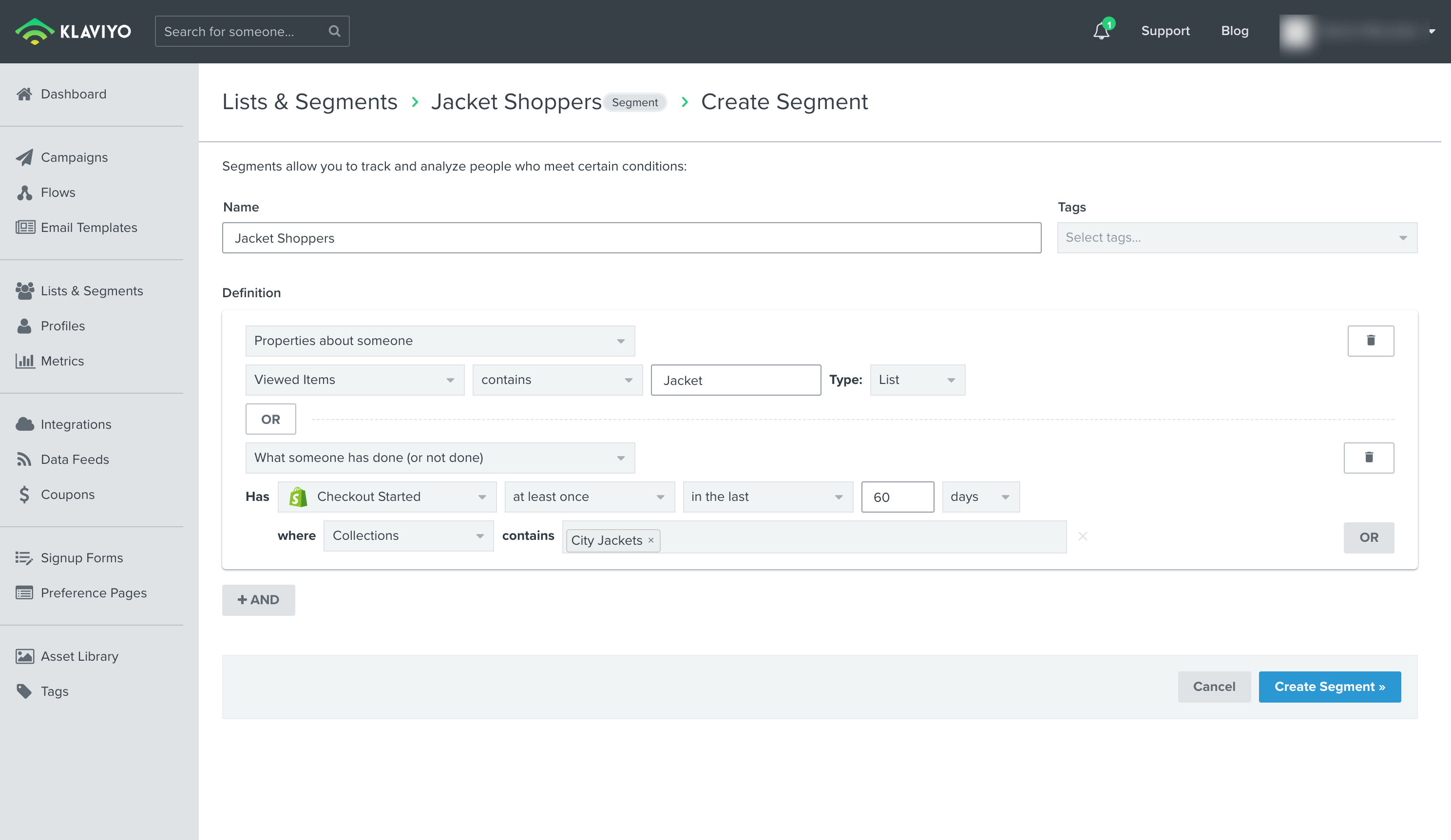
Watch the categories people are browsing. Is it men’s versus women’s clothing? Skincare products for oily skin or dry skin?
Your customers are telling you what problems they have, what products they are interested in, and what they are looking for.
Create segments around these product categories and send relevant information to them.
Another segment you can create based on user behavior and trying to make sure you provide relevant information to the right people is one of holiday shoppers. Identifying people that have had almost no engagement with your brand since the last holiday season is an opportunity to find gift-givers with family and friends that may be big fans.
It’s not worth inundating them with emails, but hitting them with an email or two highlighting your special is a worthy effort that can pay some dividends.
Crush it with your creative
A picture speaks a thousand words.
An ad needs to be thumb stopping and an email needs to resonate enough to drive a click. The creative is key.
If you’re going to do a shoot, you need to plan and act early. Planning and executing a shoot, editing the shots and getting them ready to run takes time.
If a shoot isn’t in the cards this holiday season, you can adapt existing assets or get creative using stock. Or you could go a simpler direction and use UGC, native-feeling content shot selfie style, or take some other, more low-fi approach.
By planning early you have time to analyze what has and hasn’t worked, think about the messaging themes you want to push, and think through the creative you’ll need. You also have time to test.
At a low-level, testing can be done in real time with the ads you run. If you are planning ahead, you can run tests on Helio to get user feedback, and compare different directions.
Execution
Now it’s game time. You’ve done your planning. You’ve put in the work to build a great campaign. Now is where the rubber meets the road and
The critical building blocks of a holiday campaign
Ads, landing pages and emails. The building blocks don’t change, but the way you use them can and should.
Let’s talk about ads a little bit more. You’re going to want to focus largely on prospecting ads in the months leading up to the campaign, and retargeting ads once the campaign starts. Again, we’re talking about filling your retargeting pool in September and October so you can reach them again and again in November and December.
Landing pages are the pages that your ads (and possibly emails) will bring people. The key here: they really need to echo what your ad said.
There should be no confusion for a person about how they got from A to B. There should be no doubt that this was not a trap. You’ve selectively targeted them with your ads, so speak directly to that person. You know some baseline things about them…even if it is just changing a few words or a single image, let people know you’re talking to them.
Finally, email is your big opportunity here. In past years, brands have seen as much as 89% of Black Friday and Cyber Monday purchases come from email recipients.
People that are getting your emails signed up to do so. They’ve asked to be spoken to. They know a bit about the brand, and about your products.
A thoughtful, planned out email campaign is the central hub of your holiday campaign.
Use it to build hype and excitement by teasing out the big promo over time. Use this as an opportunity to let people tell you what they’re interested in (remember, actions speak louder than words).
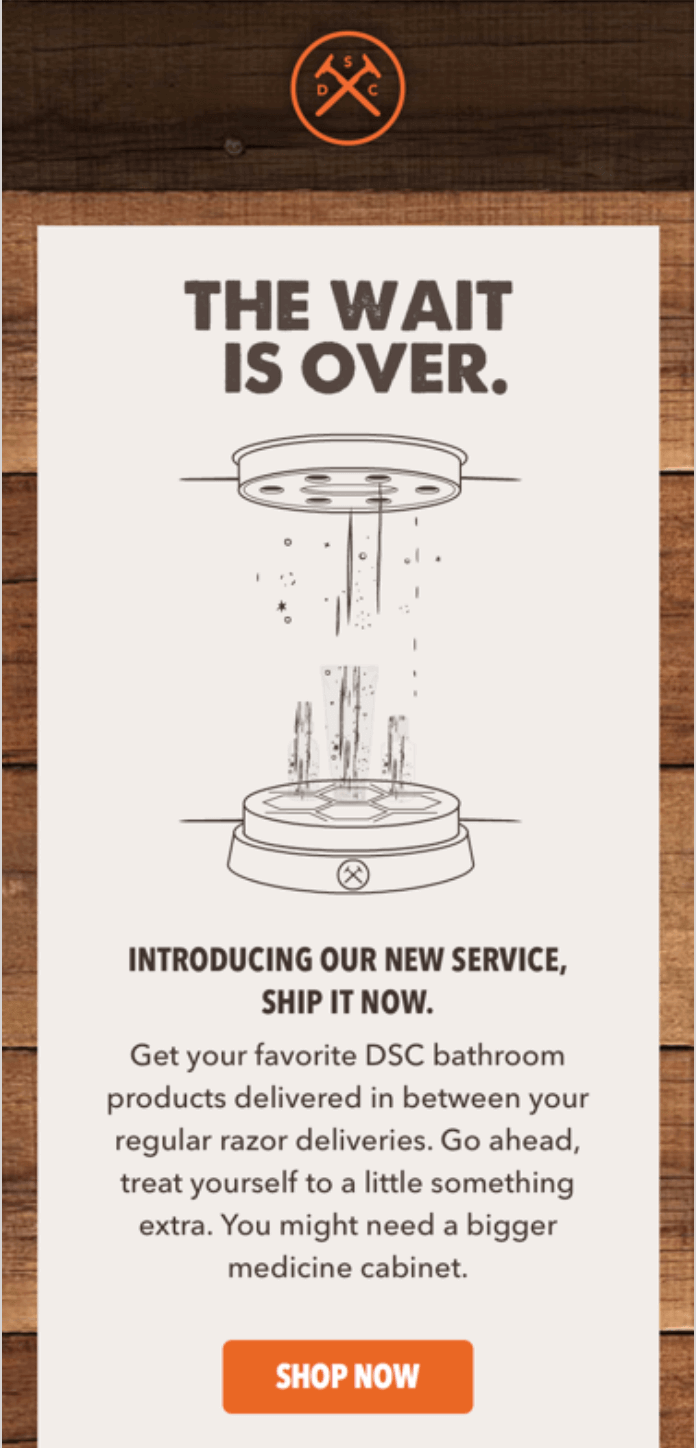
You can test messaging and offers in real time, with real customers, and adapt your ads and follow-up emails as needed.
Yes, offers can be tested in emails.
Let’s say you do decide to go with a discount. Which will hit harder, 20% off or $10 off? It depends on your product and your audience, but you can split test this and adapt based on the results.
Recapping the segment section, let people show you what they want to buy and send them emails about that, not about everything your store offers. Highlight the UVPs of those products. Give them offers for those products. Use creative featuring those products.
Make sure you have abandoned cart and abandoned checkout emails set up. If you have to pick one, do abandoned checkout. That means they actually started the process, whereas abandoned cart means that they put it in the cart and never hit “proceed to checkout”. A lot of people use their cart as a wishlist, hoping they’ll get a discount code sent their way.
Revamp your welcome emails. This is your brand onboarding, but once we hit holiday season it becomes an escalated buying cycle. You don’t want to drip it out as much — get people the goods. Condense your flow, talk products earlier, and have the tail end be more about the brand story to be the cherry on top if they are deciding between you and a more boring competitor.
And finally, connect your email segments to Facebook.
This will allow you to sync your retargeting ads up to your emails. That way the ad creative they’re seeing can be similar to the emails. The offers (in case you do different offers to different segments) match. The way you speak to them is the same. And the timing can match.
The four key phases of the holiday campaign
You are on it this year. You’re reading this guide. You’re going to sit down and start planning after this. And you are going to absolutely nail the holiday campaign. You are going to close out 2020 with a big Q4.
So you need to think through, and plan for, all four phases of the holiday sale cycle.
Phase 1: Build hype & fill the pool
This phase starts in September or October. The goal here is twofold:
- Increase your retargeting pool for ads…that means get site traffic. Focus your ad spend on new audiences, do a giveaway or partnership…the key here is to get site traffic so you can retarget them and grow your email list.
- Get people engaging with your emails and your brand. You want to get top of mind. You want to get people opening your emails now, looking forward to hearing from you, and let them start self-segmenting. Use this as an opportunity to get them excited for all the great things that are coming their way.
This is your chance to test, to learn and to experiment. You should not be discounting things, offering promos, any of that. We’re going for engagement, not reduced sales prices and cutting into your margin.
Let people know that engagement will be rewarded. Give your email list, or select segments, early access to deals. This let’s you get a proof of concept and confirmation that your promo will resonate. It also allows you to get Black Friday started a few days earlier.
Maybe that leads to inventory getting low on some products…lean into that. Fear of missing out on a popular product is a real motivator.
Phase 2: Black Friday and Cyber Monday
This is what we’ve waited for.
You’re going to see peak ad costs. You should also see higher conversion rates and a big jump in sales volume.
People’s inboxes will be cluttered, they’ll be distracted, and no one will mind getting a few more nudges than usual.
Send more than just a single email.
Follow up.
People want to be reminded of stuff they care about and want to get. No need to spam, but 2-3 emails a day across the weekend is completely fine.
And make sure your retargeting ads are cued up and that budget won’t be the limiting factor to them getting shown.
Phase 3: Holiday and the last day to ship
After Cyber Monday there will be a dip in sales. But not to the year’s average.
You still have tons of people that need to do gift shopping. Continue to market. Your offers had better not be bigger than they were for BFCM. Think about what that does psychologically. If you train people to think that they’ll get better deals if they wait, they will learn and adapt…and that means less sales for you.
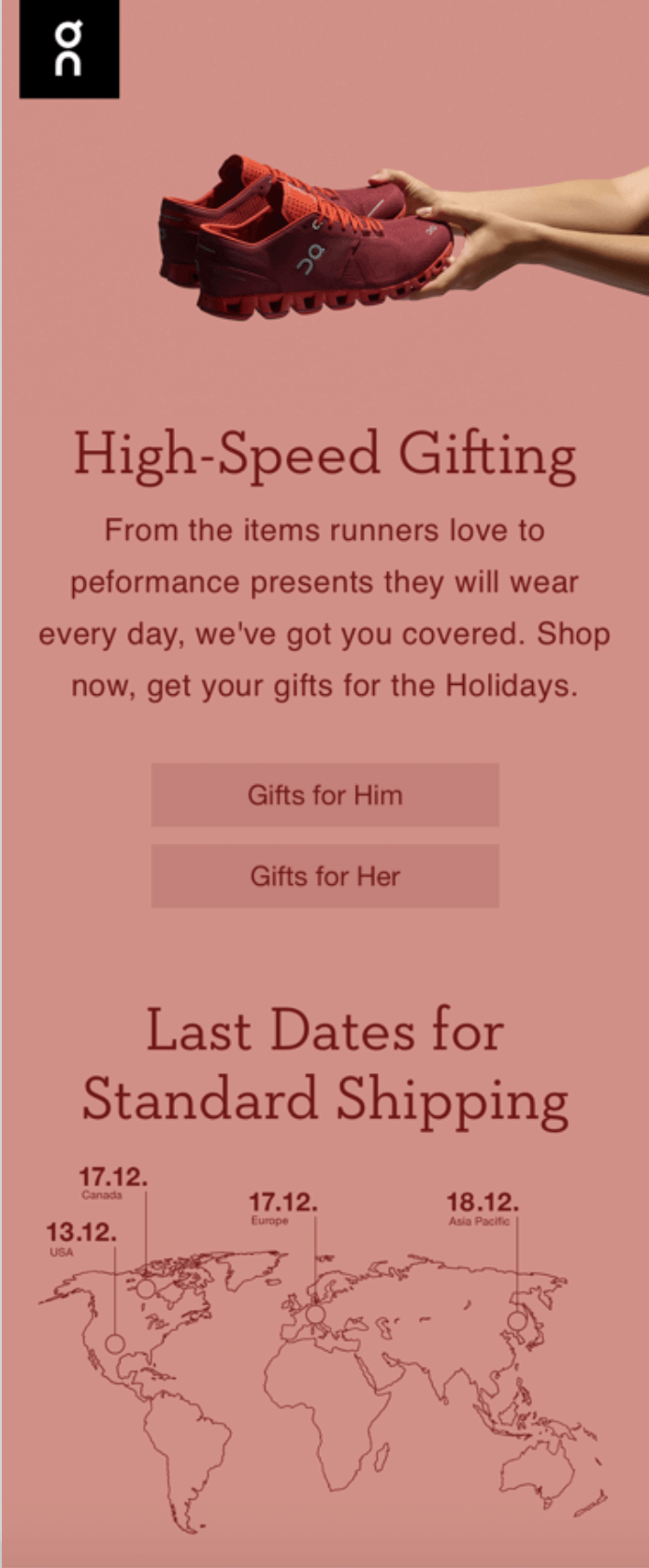
What you do want to make sure you have in place is a few emails, a site banner, and a couple of ads that highlight the last day to ship to get gifts to their destination by December 24th.
People procrastinate. Shopping needs to be done still. Or maybe it isn’t procrastination, maybe they truly were too busy or were trying to find the perfect gift. Who are we to judge?
You’re here to support them. You’re here to make them the hero with the perfect present.
Phase 4: Keep the good times rolling
You know what people have a lot of during the holidays? Time with family.
Ironically enough, that leads to a lot of time on the phone.
Help them find a place to spend those $100 Visa gift cards they got.
Or maybe the husband missed out on the not-so-subtle hints about the right gift, and now she has to get it for herself.
Shopping fever did not end on Christmas day.
This shouldn’t be some sort of fire sale, but it is a chance to remind people of things they shopped for.
Simple approach: during the holiday sale create a second abandoned cart or browse abandonment email and set the delay for two or three weeks. Now they are getting shown exactly what they looked at, plus maybe some similar items.
Want to lean more into social proof (a very positive psychological trigger)? Send emails highlighting the top selling products from the sales. Pepper it in with some stats on how many people bought it and a few reviews, quotes or testimonials. That’s a winner.
Final words
This is your year.
You have all the pieces you need to be successful.
The keys to remember:
- Plan – think through all four phases and be active in each. Learn during each. Adapt during each.
- Start early – don’t wait until mid-November to think about the holidays. We’re publishing this now so you have time to do the analysis, the planning, and the work to have a huge year.
- Remember who you’re talking to – these aren’t just “customers” or “viewers”. It’s easy to write and think that way. But these are people. Be human. Connect with them. Make it about giving them the best experience you can and they will reward you.
Good luck! If you have questions or need help, we’re here for you.
